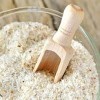
The LCHF diet is a diet with low carbohydrate content and high fat content. The abbreviation LCHF stands for "Low Carb, High Fat." The main idea is to reduce carbohydrate intake, especially fast carbohydrates, and increase fat consumption, including healthy fats.
Adjust the diet to yourself
Almost everything depends on you: how strictly you plan to adhere to LCHF principles, what your initial weight is, how quickly and how much weight you plan to lose (or if you plan to lose weight at all, or, for example, just want to break free from a sweet tooth addiction).
Carbohydrate limitations in LCHF and keto diets: analyzing consumption options
There is an average concept: the strictest version of LCHF or keto diet allows consuming no more than 10 grams per day, the average version - up to 25 grams, and the free version - up to 50 grams of carbohydrates. Usually, 20-50 grams per day are accumulated even from low-carbohydrate foods: vegetables, fruits, nuts, and dairy products. And, by the way, even the most liberal LCHF version assumes that carbohydrates are obtained from vegetables, fruits, and berries, whole milk and fermented dairy products, nuts, a small amount of root vegetables - from products with a low glycemic index.
Their consumption does not lead to a sharp increase in blood sugar. Wheat flour and grains, bread and baked goods, sugar, and sweet drinks should be avoided in any case.
Optimal Limits: The Percentage of Carbohydrates in the LCHF Diet and Its Relationship to Calories
Another method of calculation is related to the percentage of calories obtained from carbohydrates. When following the LCHF diet, this indicator varies within the range of 5-10%. If you adhere to the average consumption of about 2,000 kcal per day, carbohydrates should provide you with no more than 200 kcal.
Since one gram of carbohydrates contains approximately 4 kcal, we get the same 50 grams. However, if you are intensely involved in sports or your work is associated with heavy physical exertion, your energy needs may be much higher—up to three or four thousand calories. In such a case, you can consume more carbohydrates, but be sure not to exceed 10% of all calories. Also, be mindful not to overeat.
Gradual Reduction of Carbohydrates: The Path to Success Without Strict Limitations
LCHF allows you to eat as much as you need to feel satisfied, but unfortunately, not everyone manages to stop in time. This often happens to people who already suffer from significant excess weight. In such cases, try to plan your diet more carefully to avoid overeating.
However, even if you end up getting more than 10% of calories from carbohydrates per day, gradually reducing their quantity and, at least, abstaining from the most harmful refined carbohydrates can still yield results. Even diets with carbohydrate restrictions at 20% of total calories formally fall under the definition of low-carb, and they also work. You may likely lose weight more slowly than on a strict keto diet, but, like many other aspects of our body, this is largely determined by individual characteristics.














